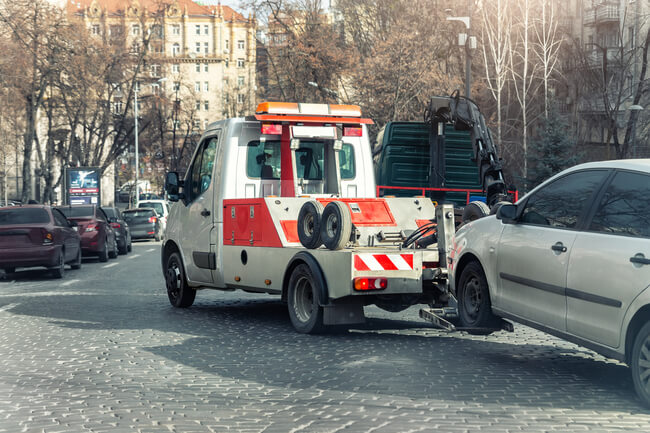The sudden realization that your vehicle is failing while you’re driving can trigger panic. Your heart races, your palms sweat, and a thousand questions flood your mind. However, knowing exactly what to do during those critical first moments can mean the difference between a safe resolution and a dangerous situation. This comprehensive guide walks you through every step of handling a breakdown safely and effectively.
Recognizing the Warning Signs Early
Your vehicle usually gives warning signs before a complete breakdown occurs. Learning to recognize these signals allows you to take action before you’re stranded in a dangerous location. Strange noises like grinding, squealing, or knocking sounds indicate mechanical problems developing. Unusual vibrations through the steering wheel or floorboard suggest issues with tires, alignment, or drivetrain components.
Dashboard warning lights are your vehicle’s way of communicating problems. Never ignore them, especially red warnings indicating critical issues. The check engine light, brake warning, oil pressure light, and temperature gauge all provide crucial information about your vehicle’s health. Responding promptly to these warnings often prevents complete breakdowns.
Performance changes also signal developing problems. Loss of power, difficulty accelerating, unusual shifting, or reduced responsiveness all indicate something isn’t right. When you notice these changes, start planning to reach a safe location rather than continuing your journey hoping the problem resolves itself.
Immediate Actions When Your Vehicle Fails
Stay Calm and Assess
The moment you realize your vehicle is failing, take a deep breath and stay calm. Panic clouds judgment and leads to poor decisions. Assess what’s happening—are you losing power gradually or suddenly? Do you have steering and brakes? Can you coast to safety?
Move to Safety
If you still have some control, carefully move your vehicle as far right as possible. Aim for the shoulder, emergency lane, or parking lot. Use your turn signal to communicate your intentions to other drivers. If you’re on a highway, try to reach an exit or rest area rather than stopping on the shoulder.
Never stop in a traffic lane unless absolutely unavoidable. If you must stop in a dangerous location, immediately exit the vehicle on the passenger side away from traffic and move far from the roadway.
Make Yourself Visible
Once stopped, turn on your hazard lights immediately. This alerts other drivers to your presence. If you have warning triangles or flares, place them behind your vehicle at appropriate distances—about 10 feet, 100 feet, and 200 feet on highways. These visual warnings give approaching drivers time to react and change lanes safely.
During daylight, raising your hood signals distress to other drivers and police officers. At night, keep your interior lights on to make your vehicle more visible. If you have reflective clothing or a safety vest, wear it if you must exit your vehicle.
When to Stay in Your Vehicle vs. Exit
This decision depends on your specific situation and surroundings. Generally, stay in your vehicle with seatbelts fastened if you’re on a busy highway with high-speed traffic, in severe weather conditions, in an unfamiliar or unsafe area, or waiting for professional help that’s arriving soon.
Exit your vehicle if you smell smoke or fuel, see flames or sparks, are in immediate danger from other vehicles, or can safely reach a protected area away from traffic. Always exit on the passenger side away from moving traffic when possible.
If you exit and move away from your vehicle, maintain visual contact with it so you can direct emergency responders. Find a safe spot behind guardrails or barriers, well off the roadway.
Communicating Your Emergency Effectively
When calling for help, provide specific, accurate information to ensure responders arrive prepared with proper equipment. Share your exact location using landmarks, mile markers, exit numbers, or GPS coordinates. Describe what happened—did you hear noises, see warning lights, or notice performance changes? Explain your vehicle’s current condition and whether it poses any safety hazards.
Mention your vehicle’s make, model, and color to help responders identify you quickly. Inform them about passengers, especially children, elderly individuals, or anyone with medical conditions. This information helps prioritizers dispatch and ensures appropriate assistance arrives.
Pomoc Drogowa services rely on accurate information to provide fast, effective assistance. The more details you provide upfront, the better they can prepare and respond to your specific situation.
Dealing with Other Motorists
Well-meaning drivers may stop to offer assistance. While many people genuinely want to help, exercise caution when interacting with strangers, especially in isolated areas. Stay in your vehicle with doors locked and windows slightly cracked for communication. Thank helpful strangers and let them know professional help is coming.
If someone offers to call for help but you’ve already done so, politely decline. Don’t accept rides from strangers or allow unknown people to tow your vehicle. Professional roadside assistance is always the safer choice.
Be wary of anyone demanding payment for unsolicited help or pushing aggressive offers. Legitimate helpers respect your decisions and don’t pressure you. Trust your instincts—if something feels wrong, it probably is.
Special Considerations for Different Environments
Highway Breakdowns
Highway breakdowns are particularly dangerous due to high-speed traffic. Merge to the shoulder as quickly and safely as possible. Stay as far from traffic lanes as you can. If possible, stop near emergency call boxes or well-lit areas. Highway patrols regularly monitor these routes and may reach you before your called service arrives.
Urban Area Breakdowns
City breakdowns often offer more immediate refuge. Look for parking lots, side streets, or business areas where you can safely stop. Urban locations typically see faster response times from emergency services. However, urban breakdowns during rush hour can delay assistance due to traffic congestion.
Rural Road Breakdowns
Rural breakdowns present unique challenges—limited traffic, no services nearby, and potentially no cell phone coverage. If stranded in a rural area, stay with your vehicle unless you can see help nearby. Your vehicle provides shelter and makes you easier to find. If you have cell coverage, make your call immediately before potentially losing signal.
Airport Vicinity Breakdowns
Breaking down near airports adds stress due to flight schedules and unfamiliar areas. Pomoc Drogowa Pyrzowice specializes in rapid response for airport-area emergencies, understanding the time-sensitive nature of travel-related breakdowns. These specialized services navigate airport areas efficiently and work to minimize travel disruptions.
What to Keep in Your Vehicle for Emergencies
Proper preparation makes breakdowns less stressful and dangerous. Every vehicle should contain an emergency kit with essential items. Include a flashlight with extra batteries for nighttime visibility, jumper cables for battery issues, basic tools like screwdrivers and wrenches, a tire pressure gauge, and work gloves.
Safety items are equally important. Pack warning triangles or road flares, a reflective safety vest, a first-aid kit, blankets for warmth, and bottled water. Don’t forget a portable phone charger—your phone is your lifeline during emergencies.
Keep important documents accessible, including your insurance information, roadside assistance contact numbers, vehicle registration, and emergency contact list. Store these in your glove compartment where you can easily find them when needed.
Weather-Related Breakdown Concerns
Weather dramatically impacts how you should handle breakdowns. In extreme heat, avoid overexertion if you must exit your vehicle. Heat stroke and dehydration happen quickly. Run your air conditioning periodically while waiting, but monitor your fuel level and engine temperature.
Cold weather requires different precautions. Stay warm but avoid running your engine continuously in snow or with blocked exhaust pipes—carbon monoxide poisoning is a real danger. If you must run the engine for heat, clear snow from around the vehicle and check the exhaust pipe regularly.
Storms, whether rain, snow, or wind, make visibility poor for both you and other drivers. This increases danger significantly. Keep your hazard lights on and stay in your vehicle unless it’s unsafe to do so.
Managing Stress During Breakdowns
Breakdowns are stressful, but managing that stress helps you make better decisions and stay safe. Practice deep breathing to calm your nervous system. Remind yourself that this situation is temporary and help is coming.
If you have passengers, keep them calm by explaining what’s happening and what you’re doing to resolve it. Children especially benefit from reassurance and clear communication. Turn the situation into a learning moment rather than a crisis.
Use waiting time productively if possible. Make necessary phone calls, review your schedule and make adjustments, notify people expecting you about delays, or simply rest. Accepting the situation rather than fighting it mentally reduces stress significantly.
After Help Arrives
When professional assistance arrives, verify their identity and that they’re from the company you called. Legitimate services will have proper identification, marked vehicles, and professional appearance. Explain what happened and any observations about your vehicle’s behavior. Ask questions about what they’ll do and where they’ll take your vehicle.
Retrieve all personal belongings before your vehicle is towed. Check the trunk, glove compartment, and all storage areas. Take photos of your vehicle’s condition if relevant, especially if damage occurred. Get documentation including the driver’s name, company information, destination address, and estimated costs.
Frequently Asked Questions
Q: Should I try to fix the problem myself or wait for professionals? A: Unless you have mechanical expertise and proper tools, wait for professionals. Attempting repairs on busy roadsides is dangerous and may worsen the problem. Simple issues like changing a tire might be manageable if you’re experienced and in a safe location, but most situations require professional assistance.
Q: How do I know if my breakdown is covered by insurance or roadside assistance? A: Check your insurance policy and roadside assistance membership details before emergencies occur. Most policies clearly state what’s covered. During an emergency, call your provider—they’ll verify coverage and explain any costs you might incur.
Q: What if my phone battery dies during a breakdown? A: This highlights the importance of keeping a car phone charger. If your phone dies, flag down help from passing vehicles or walk to the nearest emergency call box on highways. Some newer vehicles have built-in emergency communication systems you can use.
Q: Is it safe to accept help from passing motorists? A: Use caution. While many people genuinely want to help, prioritize your safety. Stay in your locked vehicle while communicating through a slightly opened window. Accept calls for help on your behalf but decline rides or direct assistance from strangers. Professional services are always safer.
Q: What should I do if I break down in an unsafe neighborhood? A: Stay in your vehicle with doors locked and windows up. Call for help immediately and consider calling police non-emergency lines to report your situation. If you feel threatened, call emergency services (911 in the US). Don’t exit your vehicle unless it’s unsafe to remain inside due to fire or other immediate dangers.
- How to Handle a Vehicle Breakdown Safely: A Driver's Essential Guide
- Pomoc Drogowa services rely on accurate information to provide fast, effective assistance. The more details you provide upfront, the better they can prepare and respond to your specific situation.
- Pomoc Drogowa
Related posts:
No related posts.





